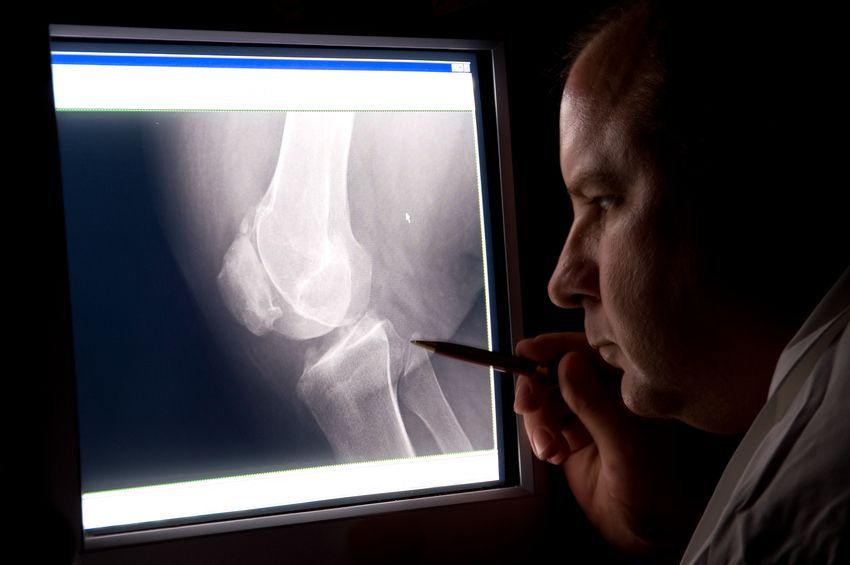
I Married a Zebra: How Imaging Can Help Doctors Diagnose My Husband’s Rare Illness – Pheochromocytoma

Almost every medical student learns about the old adage Dr. Theodore Woodward coined in the late 1940s that says, “When you hear hoofbeats, think of horses not zebras.”
The intent is to teach medical students to look for the most common explanation for a patient’s illness. Most people with high blood pressure consume too much salt, do not exercise enough or are overweight, for example.
But not all patients are common “horses,” medically speaking; some are “zebras” with rare illnesses. I should know – I married a zebra.
My zebra has a condition known as pheochromocytoma. Most doctors and patients with the condition call it “pheo” (FEE-oh). Many medical professionals refer to pheo as “the great mimic,” because it imitates so many other conditions.
Pheo is a relatively rare condition, affecting about two to eight people out of every million people, according to the National Cancer Institute. Doctors learn about pheo in medical school but most never see a patient with the condition. In fact, my husband is the only pheo patient his current team of doctors has ever seen.
Pheo can cause a hodgepodge of symptoms that do not seem to have anything to do with one another. The symptoms can also mimic other common diseases. These symptoms include:
- Extremely high blood pressure (episodic hypertension)
- Heavy sweating
- Headache
- Rapid heartbeat
- High blood sugar
- Tremors
- Upper abdominal pain
- Anxiety or sense of doom
The most notable, common and dangerous symptom of pheo is the sudden and dangerous blood pressure spikes. The episodes of hypertension associated with pheo do not respond to conventional treatment; doctors prescribe the strongest anti-hypertensive medications available and the patient’s blood pressure remains dangerously high for hours or even days. The other effects of pheo, such as rapid heartbeat, can complicate treatment.
My husband started experiencing pheo episodes nearly 15 years ago. I took him to the local emergency department (ED) several times with heavy sweating, high blood pressure, rapid heartbeat and upper abdominal pain. The ED doctors would typically attribute the high blood pressure and other symptoms to the abdominal pain. They sent him home with pain medications and suggested a consult with a surgeon two weeks later. The surgeon would never find anything wrong, like a gallstone or ulcer. After a couple of weeks, my husband would feel better for a couple of years, so nobody pursued the problem.
The episodes became more frequent and more severe as the years go by. Now he suffers a pheo crisis once every six months or so, and the episodes are getting more severe.
Episodes can occur unexpectedly and at any time, so pheo zebras and their families must always be prepared to go to the nearest emergency room while on vacation, while running errands, or even during the course of a normal day. The smallest illness or injury, such as the flu or a broken finger, can cause a pheo crisis; patients must always weigh the benefits of simple medical or dental procedures against the risk of a pheo attack. My husband suffered the last pheo episode after we caught the flu. The previous episode occurred out of the blue, as he was sitting on the porch enjoying a summer morning.
Left untreated, hypertension and other effects of a pheo attack can lead to serious complications, including stroke, heart disease, kidney failure and even death. These complications can lead to lifelong disability and contribute to the stress of having pheo. My husband went into kidney failure with the last two attacks, and was nearly put on dialysis.
People with pheo face special challenges, including the stress of having a serious condition. The hypertension can lead to extended and emotionally traumatic stays in the hospital’s Cardiac Care Unit. Patients can undergo scary emergency procedures, such as cardioversion to shock the heart back into its proper rhythm. My zebra underwent four cardioversions on this last round of pheo: two shocks to the heart while he was awake and two 300-joule shocks while he was under anesthesia.
About Pheo
Pheochromocytoma is a type of cancer that affects a specific type of cell in the body, known as chromaffin cells. These cells secrete adrenaline and other hormones responsible for the “fight or flight” instinct. These hormones prepare the body for fighting or running away by causing increases in blood pressure, heart rate, blood sugar and other effects. In people with pheo, the cancerous chromaffin cells trigger an overwhelming flood of these hormones at unexpected times.
The adrenal glands, which sit on top of the kidneys, contain a large number of chromaffin cells. These cells also occur outside of the adrenal glands, found in the carotid artery, in the head, neck or elsewhere in the body. Doctors sometimes refer to these as paragangliomas. About 10 percent of pheo cases are paragangliomas.
Pheo tumors occurring in the adrenal glands can be as large as 5 cm, which is a little less than two inches. Paragangliomas occurring outside the adrenal glands can be much smaller.
Doctors can often treat pheo or paragangiomas by removing the cancerous chromaffin cells, but first they have to find the elusive and tiny cells. Considering the body contains about 37.2 trillion cells, finding the handful of cancerous chromaffin cells are a bit like finding a needle in a haystack. This is where good medical care, lab tests and imaging come in.
Diagnosing and Treating Pheo
Many people struggle with the dangers of the condition, several misdiagnoses, uncomfortable and scary lifesaving procedures, and testing for years before receiving a correct diagnosis. Pheo can cause upper abdominal pain, as it did with my husband for example, so a doctor might think it is a gallbladder problem and explain the high blood pressure as the body’s natural response to pain. Because pheo and its serious complications can cause anxiety, some doctors misdiagnose pheo patients with stress disorders.
My zebra struggled without a diagnosis for years. Along the way, his primary care provider and specialists proposed then ruled out a number of illnesses, including celiac disease, thyroid problems, anxiety, and gall bladder problems.
My husband took a step in the right direction when a doctor referred him to a surgeon for gallbladder removal. Fortunately, the surgeon looked over my husband’s chart and refused to do the surgery because he thought my husband had Addison’s disease, which is very similar to pheo. The blood tests for Addison’s disease came back negative, leaving my husband without a diagnosis and a zebra once again.
Then we learned about pheo. The symptoms seemed to match – all we needed were a few tests to diagnose or rule out the elusive condition. Diagnosing pheo is tricky, and involves the use of careful evaluation, blood tests and imaging. It is unlike diagnosing many other diseases because doctors have to suspect pheo first and then order diagnostic tests at exactly the right time to confirm their suspicion.
Diagnosing pheo requires blood and urine tests when the first signs and symptoms of pheo strike. These blood and urine tests look for evidence of high adrenaline levels. Positive test results mean a person has pheo.
It was a watershed moment when my husband’s results came back positive. He was no longer a zebra.
Once a patient like my husband tests positive for pheo, doctors use imaging, such as computed tomography (CT) and magnetic resonance imaging (MRI) scans to find the chromaffin cells. Radiologists performing the test inject special contrast dyes that help the doctors see the cancerous cells. Imaging is especially helpful in finding paragangliomas that appear anywhere in the body. After imaging tests reveal the location or locations of the cancer, surgeons can remove the affected chromaffin cells and prevent future pheo attacks.
The first rounds of imaging have not located any cancerous chromaffin cells in my husband’s body yet, which means he probably has paragangliomas outside of his adrenal glands. He is scheduled for more imaging tests over the next few weeks.
Only imaging can find these cells in living patients – the chances of finding a tiny patch of cells among the trillions of healthy cells in the human body without CTs and MRIs are infinitesimal. Thanks to imaging and other testing, though, doctors can accurately diagnose “the great mimic” and help zebras with pheochromocytoma lead longer and healthier lives.





